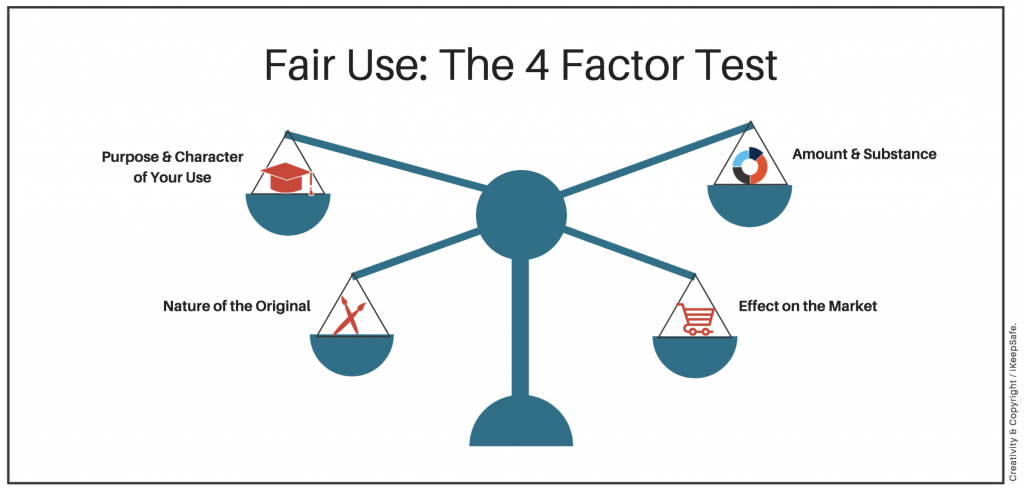
Fair use is a legal doctrine that promotes freedom of expression by permitting unlicensed use of copyright-protected works in certain circumstances. Section 107 of the Copyright Act provides the statutory framework for determining whether a use is fair use and identifies certain types of uses—such as criticism, commentary, news reporting, teaching, scholarship, and research—as examples of activities that may qualify as fair use. The Act calls for consideration of the four factors in determining whether a use made of a work is fair use. Fair use is technologically neutral and format agnostic so the same analysis can be applied to any medium.
The Four Factors

The first factor takes into account the purpose and character of the use, including whether such use is of commercial nature or is for nonprofit educational purposes.
|
Favors Fair Use |
Requires Permissions |
|
|
*Transformative Use: Transformative use is particularly favored in determining fair use. For a use to be considered "transformative," the material taken from the copyrighted work should be significantly changed for a broadly beneficial purpose different from that of the original. It should not just repeat the work for the same intent and value as the original.
This factor looks at the creativity of the copyrighted work. Fair use generally favors use of factual works over fictional works. Fair use also favors published works over unpublished works as authors should be able to decide when they publish their works.
|
Favors Fair Use |
Requires Permissions |
|
|
This factor considers the quantity and quality of the copyrighted work being used. Use of copyrighted material is more likely to be fair under the third factor when a small quantity is used and when the portion used is not central or significant to the entire work. Regardless of the amount of work used, if it is from the “heart” or essence of the work, it may not be considered as fair use.
|
Favors Fair Use |
Requires Permissions |
|
|
The fourth factor takes into account how the unlicensed use harms the existing and future market for the original copyrighted work. When a use is transformative, it is less likely that the market for the original work is damaged.
|
Favors Fair Use |
Requires Permissions |
|
|
*Uploaded and made available on the Web or other public forum: While earlier court decisions were based on the amount of work copied, more recent decisions have been based on how much of the work has been made available to the public.
*Numerous copies: If numerous copies of a work are made and widely distributed (for example, the work is used in multiple sections of a course or is distributed to the general public), it is more likely that such use of a work will not fall under fair use.
*Repeated Use: Even if a use of a work is deemed fair use for one semester, repeated use of the same copyrighted content semester over semester may not be considered fair use because there is enough time to seek a license from the copyright holder to use the work.
Fair use is an important doctrine but must be used with caution. The four factors discussed above are non-exclusive; thus other factors may be considered in determining whether a use of a work is fair use. A final determination of fair use requires weighing and balancing all four factors before reaching a conclusion. Therefore, not all educational use of copyrighted works falls under fair use. Similarly, there is no set formula to ensure that a predetermined percentage or amount of work - or specific number of words, lines, pages, copies - may be used without permission. Beyond a very broad statutory explanation of what fair use is and some of the criteria applicable to it, the courts are free to adapt the doctrine to particular situations on a case-by-case basis.